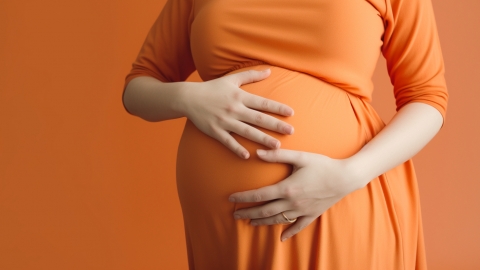What are the correct sleeping positions for pregnant women?
Generally, pregnant women can choose from various sleeping positions during pregnancy, including supine (on the back), right lateral (right side), left lateral (left side), semi-reclining, or any comfortable position they prefer. The specific details are as follows:

1. Any comfortable sleeping position
During early pregnancy, since the embryo is still small and the uterus remains within the pelvis, the sleeping position of the pregnant woman has minimal impact on the fetus. At this stage, pregnant women can choose any comfortable position, such as lying flat or on either side. However, prone sleeping (lying on the abdomen) should be avoided to prevent pressure on the abdomen, which could negatively affect the fetus.
2. Supine (on the back)
When sleeping on the back, pregnant women can use special supportive pillows to help maintain this position. For example, placing a small pillow under the knees or holding a large pillow on either side of the body can improve sleeping comfort. Sleeping in the supine position reduces the frequency of turning over, which helps both the mother and the fetus rest better.
3. Right lateral position (right side)
As the fetus grows, the uterus enlarges and moves out of the pelvis into the abdominal cavity. During this period, sleeping on the right side is recommended for pregnant women, as it helps improve blood circulation, increases blood flow to the uterus and placenta, and benefits the fetus's nutrition and healthy development.
4. Left lateral position (left side)
In late pregnancy, the uterus has significantly enlarged and often exhibits physiological rightward rotation (dextrorotation). At this stage, sleeping on the left side can effectively alleviate the rightward rotation of the uterus, reduce pressure on the spine, abdominal aorta, and inferior vena cava, ensure sufficient blood flow to the heart and uterus, and support fetal growth and development.
5. Semi-reclining position
Pregnant women can also try a semi-reclining position by elevating the upper body, creating an angle between the body and the bed surface. This posture helps reduce the burden on the heart, improves breathing, and allows the pregnant woman to fall asleep more comfortably.
Throughout pregnancy, women should choose appropriate sleeping positions based on gestational age and personal comfort. Correct sleeping positions help improve blood circulation, increase blood flow to the uterus and placenta, promote healthy fetal development, and simultaneously reduce physical strain on the mother.




